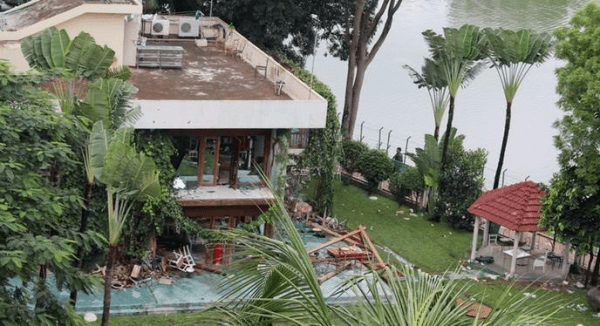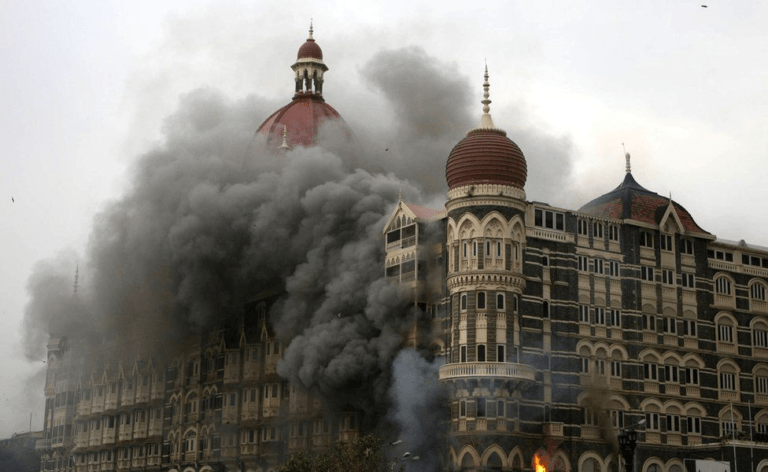During the Mumbai attack on 26th November 2008, Additional Commissioner of Mumbai Police Ashok Kamte was the first responder and got killed by terrorist bullets while saving the city. Then 8 years later, another terrorist attack took place at the Holey Artisan Bakery in the heart of Dhaka. This time Assistant Commissioner of the Detective Branch of Bangladesh Police Rabiul Islam lost his life along with OC Salahuddin Ahmed.
Now, the question arises: what is the link between these two incidents? The answer is terrorist financing. Both the Mumbai attackers and Dhaka attackers were empowered through terrorist financing and the scars from the casualties are still carried by the two nations. We can spend billions and adopt the latest security measures to prevent these kinds of incidents but if we do not go to the root of these problems, the scars will keep coming back in new forms.

Harrison Bardwell and Mohib Iqbal, scholars from the Institute for Economics and Peace, researched the economic impact of terrorism from 2000 to 2018 which showed that terrorism cost the world economy 855 billion US dollars within the mentioned period. This huge sum of money could have ended world hunger instead of bringing scars to the nations.
Money is supposed to ease the lives of mankind but when it becomes the cause of criminal activities then heroes like AC Ashok Kamte and AC Rabiul Islam come forward and sacrifice their lives to protect the citizens. At this point, you may have got an idea about terrorism financing. According to FATF (Financial Action Task Force), “Terrorism financing is the financing of terrorist acts and terrorists and terrorist organizations”. Harrison Bardwell and Mohib Iqbal also showed that terrorism financing can deteriorate a country in 4 ways. They are:
-
Deaths from terrorism.
-
Injuries from terrorism violence.
-
Property damage.
-
Indirect GDP losses.
US Defense Analyst and a Professor at Naval Postgraduate School, Michael Freeman, showed the need for money for global terrorism in a research paper named “The Sources of Terrorist Financing: Theory and Typology”. He showed that the cost of individual terrorist operations can vary according to the level of attacks or destruction. The report also estimated the operational costs of history’s eventful terrorism incidents. It showed:
-
The 1993 World Trade Centre bombing operation cost 19 thousand US dollars.
-
Alias Umar Patek, an Indonesian convicted terrorist, conducted a terror attack in Bali in 2002 incurring a cost of 20 thousand US dollars.
-
The 2004 Madrid train bombings estimated cost was in between 10 and 50 thousand US dollars.
-
History’s biggest terror attack 9/11 is still the most expensive financed terror project, costing between 350 and 500 thousand US dollars.

These illicit expenses are responsible for the world economy turbulence as these transactions happen through the black-market channel. Let us see the annual budget of some terrorist organizations:
[Source: Studies in Conflict & Terrorism, 2011]
In 2018, Nigerian politician Naja’atu Bala Muhammad rightly said, “Terrorism has become a multi-billion-dollar industry”. Now, we can have an idea of how much money these terrorist organizations hold to traumatize us. Defense Analyst Freeman has identified six criteria and four types of sources of terrorism financing. The six criteria are:
-
Quantity
-
Legitimacy
-
Security
-
Reliability
-
Control
-
Simplicity
And the four types of sources are:
-
State sponsorship
-
Illegal activities
-
Legal activities
-
Popular support
Now, one may wonder if there is any connection between terrorist financing and money laundering. The confusion has been cleared by FATF. FATF has identified that the techniques used to launder are the same as those used for financing terrorism. Funds for terrorism can be generated from legitimate or illegitimate sources. The only difference with money laundering is that money laundering happens only through the financial structure/system of a country by collecting funds from illegitimate sources but terrorist financing can collect funds and assets from any sector of a country and it can be both legitimate or illegitimate such as tourism, chemical, education, agricultural, etc. For these reasons, FATF has revealed nine special recommendations for the countries to combat terrorist financing. Those are:
-
Ratification and implementation of UN instruments
-
Criminalizing the financing of terrorism and associated money laundering
-
Freezing and confiscating terrorist assets
-
Reporting suspicious transactions related to terrorism
-
International co-operation
-
Alternative remittance
-
Wire transfers
-
Non-profit organizations
-
Cash couriers
Following these recommendations, Bangladesh and India both countries have developed a national strategy to combat terrorism financing. Bangladesh Financial Intelligence Unit and India Financial Intelligence Unit both are the respective key regulator to combat terrorism financing.

Now, let us go back to the 2008’s Mumbai attack where we are going to see how LeT (Lashkar-e-Taiba) was financed. Saroj Kumar Rath, an Assistant Professor at the University of Delhi university, portrayed the financial development of LeT in a research paper named “Financial Network of Lashkar-e-Taiba”. According to this, LeT started its journey by obtaining 365 million Pakistani Rupees (equivalent to 5.2 million US dollars) for annual expenditure. Despite LeT being a terrorist organization, its donors never faced any difficulty in transferring money through legal routes like cheques and online transfers. The paper also showed 3 major sources of LeT’s fund management. The sources were:
Source 1: Pakistan government (type – state sponsorship)
Source 2: The common people of Pakistan and non-resident Pakistani working in western countries (type – popular support)
Source 3: Individuals or groups from Middle East countries. Domestic fundraising from private donations, madrassas, and storefront drop boxes. International Islamic non-governmental organizations (type – legal activities)
Thus, these 365 million annual expenditures strengthened LeT to plan and execute the 2008 Mumbai attack.
Now it is time to see how Neo-JMB collected funds for 2016’s Holey Artisan Attack. Retired Brigadier General Sakhawat Hossain, an author of multiple books on terrorism, told that the JMB – be it old or Neo – turned to robbery to raise money because the government cracked down on money laundering schemes. The Islamic State (IS) looted banks in Mosul to collect funds and here the JMB and Ansar al Islam looted banks in Ashulia to collect funds. They thought that bank robbery and plundering wealth from the ‘apostates or infidels’ was justified for a ‘greater cause’! According to a report, Rokonuddin Khondoker, who fled to Syria with his family, and militant suspects Retired Major Jahidul Islam and Tanvir Kadri made donations of 80 lac takas to the Neo-JMB that carried out the Gulshan Holey Artisan attack.
Even after all these years, these scars are not mitigated yet but we sure can fight against such terrorism from our respective positions. Wherever we are, be it in an educational institute, office, at home or abroad, bank, etc. we have to be aware and alert. An all-out effort is needed to save our future.
It can be a joint working group of Bangladesh and India on combating terrorism financing or publications like ‘Extremism and terrorism in the eyes of Islam’, a book published on 24th July 2022 by the Anti-Terrorism Unit of Bangladesh Police. Such activities will weaken the financing network of terrorist groups and our combating activities from our respective positions will give proper tribute and meaning to AC Ashok Kamte and AC Rabiul Islam’s departed soul.
Abrar Mahmud is an undergraduate BBA (Major in Finance) student at the Army Institute of Business Administration, Savar.



